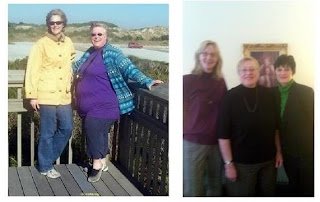
For those of you who think you have tried “everything” for your arthritis pain, tried this and tried that but haven’t tried avoiding nightshades— in my opinion, it’s something you do need to try... If you’re one of those people whose pain treatments (be it chiropractic, acupuncture, laser, energy medicine, whatever!) provides only a day or two of relief, you’re quite possibly nightshade sensitive.A physical therapist once told me that if a patient isn’t responding to treatment, one of the first things to consider is nightshade sensitivity— there is simply nothing else that anyone can do to help somebody in pain when nightshade sensitivity is the cause—because once they eat some nightshades again, their pain will return as it was before.
Could I be sensitive?The WAPF article asks the same question:
But the real question is, why are some people more sensitive than others? Nutrient deficiencies certainly come into play. For example, if you don’t have enough magnesium, you will be more prone to calcinosis. Deficiency in vitamin D may exacerbate the problem. The speed at which one’s liver and kidneys detoxify these compounds plays a huge role, and this is dependent both on genetics and nutrition...A key nutrient is vitamin K2
Hmm, I already supplement with magnesium, D3 and K2 (both MK4 and MK7). But when I get the knee pain it's still excruciating. Is it worthwhile trying to avoid most of the nightshades? This website lists the common ones.
Potatoes, tomatoes, sweet and hot peppers, eggplant, tomatillos, tamarios, pepinos, pimentos, paprika, cayenne, and Tabasco sauce are classified as nightshade foods.
And also goes on to add:
A particular group of substances in these foods, called alkaloids, can impact nerve-muscle function and digestive function in animals and humans, and may also be able to compromise joint function.
Of that list I guess tomatoes are the ones I have most often. Heck, I plant them in my garden!
Arthritis.about.com points to a university report which warns:
"No foods have been definitively shown to cause or exacerbate arthritis in most individuals. A variety of diets and hand-me-down information exists about certain foods and arthritis, in particular the night shade plants, but none of it has been proven."
In other words, very similar to other nutritional dicta - unsupported by the mainstream, but lots of anecdotal evidence to support it. The 'about' article above had lots of comments from people about how eliminating nightshades alleviated their pain.
I have honestly never thought of tracking my pain and seeing it it correlated to anything in my diet. Yet last week I was in such pain I was delving back into the ibuprofen - which I had been trying to eliminate to ease stresses on my liver. I was also eating up a couple big eggplants last week too. Possible relationship?
At any rate, I think at this point I'm willing to try an experiment of one to see if going nightshade-free helps, and to try to be more mindful, if my pain recurs, about what I may have eaten in the previous days. This week I am totally pain-free, and have also been nightshade-free. Not purposefully. It just happened.
But damn, I will miss moussaka. One of my favorite dishes. But I'm giving it a shot.








